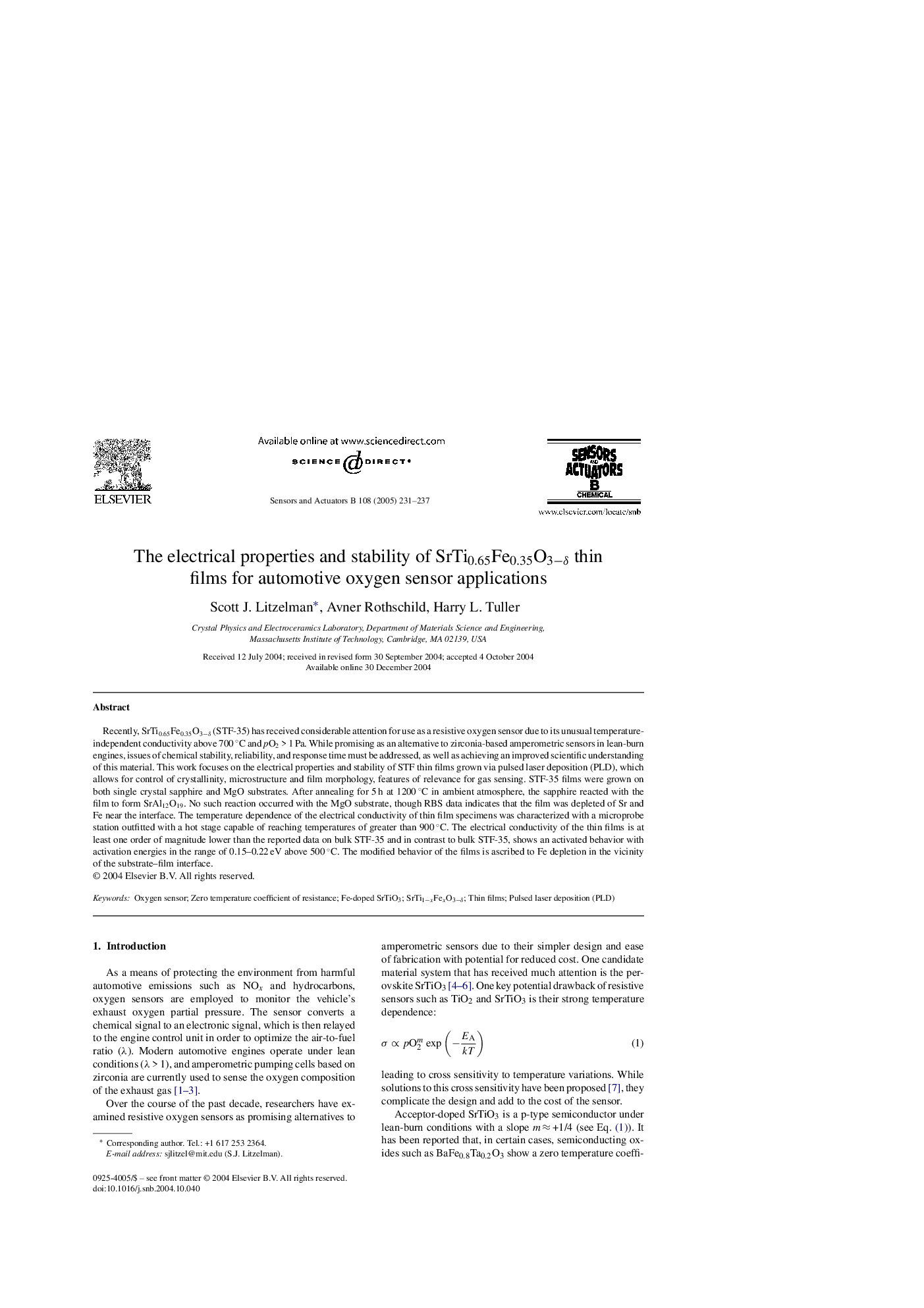| Article ID | Journal | Published Year | Pages | File Type |
|---|---|---|---|---|
| 9700933 | Sensors and Actuators B: Chemical | 2005 | 7 Pages |
Abstract
Recently, SrTi0.65Fe0.35O3âδ (STF-35) has received considerable attention for use as a resistive oxygen sensor due to its unusual temperature-independent conductivity above 700 °C and pO2 > 1 Pa. While promising as an alternative to zirconia-based amperometric sensors in lean-burn engines, issues of chemical stability, reliability, and response time must be addressed, as well as achieving an improved scientific understanding of this material. This work focuses on the electrical properties and stability of STF thin films grown via pulsed laser deposition (PLD), which allows for control of crystallinity, microstructure and film morphology, features of relevance for gas sensing. STF-35 films were grown on both single crystal sapphire and MgO substrates. After annealing for 5 h at 1200 °C in ambient atmosphere, the sapphire reacted with the film to form SrAl12O19. No such reaction occurred with the MgO substrate, though RBS data indicates that the film was depleted of Sr and Fe near the interface. The temperature dependence of the electrical conductivity of thin film specimens was characterized with a microprobe station outfitted with a hot stage capable of reaching temperatures of greater than 900 °C. The electrical conductivity of the thin films is at least one order of magnitude lower than the reported data on bulk STF-35 and in contrast to bulk STF-35, shows an activated behavior with activation energies in the range of 0.15-0.22 eV above 500 °C. The modified behavior of the films is ascribed to Fe depletion in the vicinity of the substrate-film interface.
Related Topics
Physical Sciences and Engineering
Chemistry
Analytical Chemistry
Authors
Scott J. Litzelman, Avner Rothschild, Harry L. Tuller,
